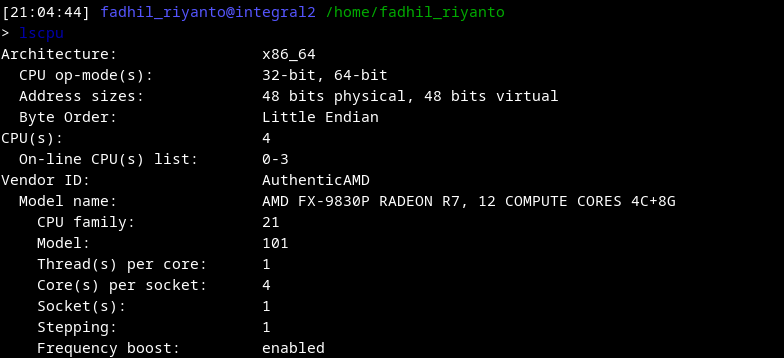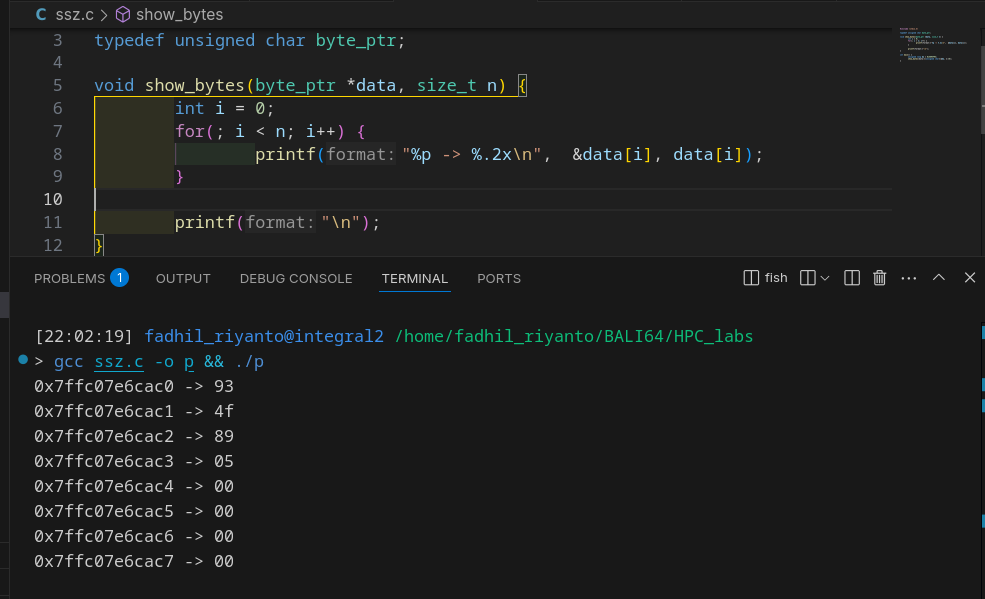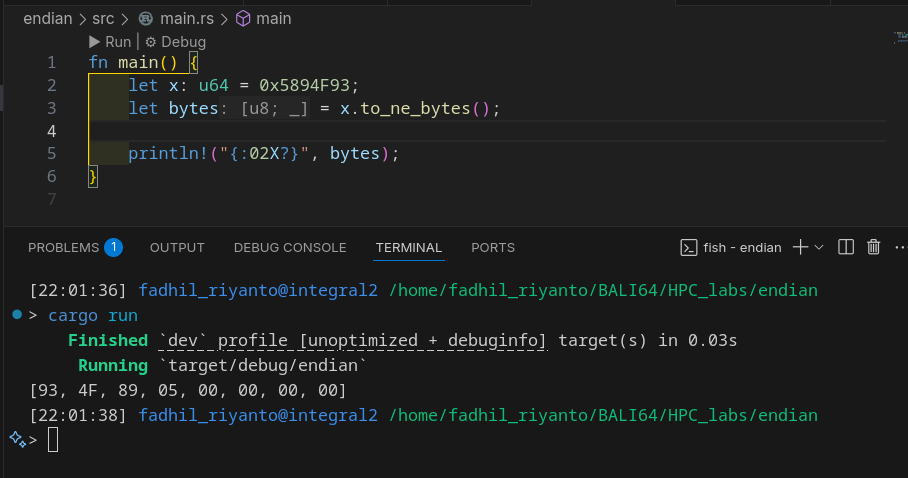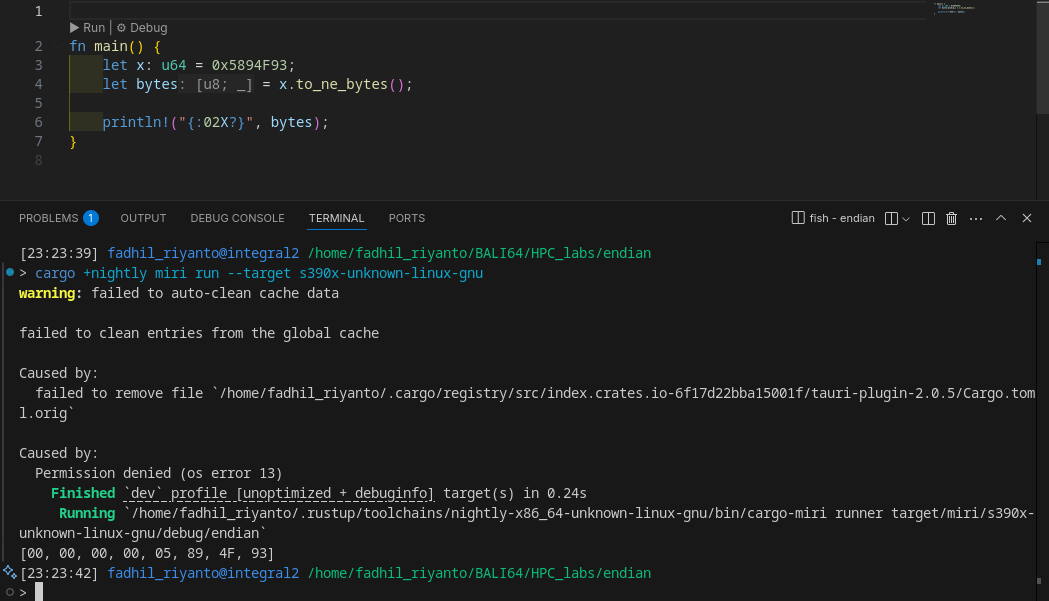amd64 endianness
I'll show you, the little endian (that used in most x86-64 linux systems), let go deeper
I have very simple program, the program
#include <stdio.h>
typedef unsigned char byte_ptr;
void show_bytes(byte_ptr *data, size_t n) {
int i = 0;
for(; i < n; i++) {
printf("%p -> %.2x\n", &data[i], data[i]);
}
printf("\n");
}
int main() {
unsigned long da = 0x5894F93;
show_bytes((unsigned char*)&da, 8);
}
as you can see, this is what we write
hexadecimal : 0x05 0x89 0x4F 0x93
dummy addr : 0 1 2 3
the result
0x7fff0fe80d10 -> 93
0x7fff0fe80d11 -> 4f
0x7fff0fe80d12 -> 89
0x7fff0fe80d13 -> 05
0x7fff0fe80d14 -> 00
0x7fff0fe80d15 -> 00
0x7fff0fe80d16 -> 00
0x7fff0fe80d17 -> 00
wow, it reversed!, because
hexcode : 0x93 0x4f 0x89 0x05 0x00 0x00 0x00 0x00
dummy addr : 0 1 2 3 4 5 6 7
^~~ MSB ^~~ LSB
(read it first from right, to left, as you read binary code)
WOW, its least endian first, so the machine is little-endian
you can also check out my lscpu result


rust
result

big endian
because most of machine is little-endian, even RP2040 ARM chip, I'll demontrate it (with some stuff)
first, I'll use miri
miri
this unique tool can emulate big endian
